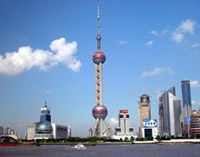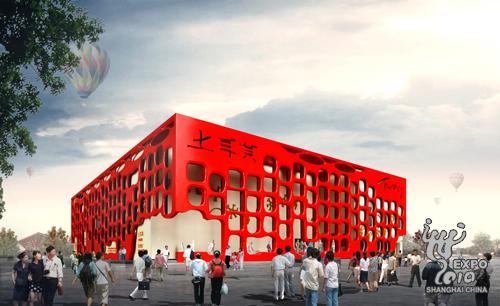|
|


ADVERTISEMENT
Buy Your own advertising
spaces!
.
Download Adobe Acrobat Reader to open [PDF] files.
Recent Visitors
Turkey to portray the heart of an advanced Neolithic age
2009. 15 October
 An artist's rendition of the Turkey Pavilion inspired by one of the first-known settlements, Catalhoyuk.
An artist's rendition of the Turkey Pavilion inspired by one of the first-known settlements, Catalhoyuk.
by Wu Shen
(shanghaidaily.com)
THE theme of the Turkey Pavilion - "The Cradle of Civilization" - was inspired by one of the first-known settlements in the world, Catalhoyuk, which is situated in the center of the region of Anatolia.
Catalhoyuk was the pride of Turkish people as the heart of advanced culture in the Neolithic Period (7400?6000 BC). It is also the main inspiration for the exterior design of the pavilion.
The designs of many Expo pavilions have been enhanced by the contemporary styles of international architects. However, the three-dimensional images on the exterior of the Turkey Pavilion represent scenes which were once carved on the walls of houses in Catalhoyuk, including extinct wild cattle, stags and eagles swooping down on small animals.
These mural paintings are regarded as the world's oldest map or plan and the first landscape painting.
The two colors on the exterior cladding - red and beige - come from the original colors of those wall paintings. Red is not only the color of the Turkish national flag but it also signifies good luck in Chinese culture.
Catalhoyuk was composed of domestic buildings that were 4,500 years older than the pyramids. It was famous not only as the world's oldest permanent settlement, but also because of the working skills developed by its inhabitants.
"This settlement was chosen as the theme for the Turkey Pavilion for its relation to the general theme of World Expo 2010 - 'Better City, Better Life'," said Sencar Ozsoy, representative-general of the Turkey Pavilion.
The whole building will consist of three parts - Dreaming of the Past, Cultivating the Present and Aspiring to the Future.
Dreaming of the Past
The production of obsidian (volcanic glass) tools was the major contribution the inhabitants of Catalhoyuk made to the development of agriculture.
The entrance of the pavilion will be covered by a black glazed surface to represent the prosperity brought by obsidian stone. It tells the secret of a once-lived "better life."
A map indicating the ancient sites of Turkey will be placed at the entrance, showing the difficulty of mapping the complex nature of the past which will be interpreted as a "dream" by the architects and will be fragmented into snapshots of images and objects.
The evolution from primitive hut to a more sophisticated shelter, the development of building materials and construction techniques, the emergence of the first cult buildings, circular planned shelters, first examples of domestic goods, furniture and utensils as well as the first planned settlements are the major inspiration for the display's first section.
As visitors walk through the Memory Lane of Anatolia, they will learn about the "firsts in Turkish history."
These include the first mirror, the first thermos, the first man-made dam and the first planned city in history - they will be presented in various ways to inspire visitors' interest and desires for further research.
Turkey is regarded as the cradle of civilization, cultivating a number of kingdoms that transformed into global powers, including the Roman Empire, Byzantium, Seljuk and the Ottoman Empire.
The general theme of this section of the pavilion will underscore the intellectual and physical infrastructure of Istanbul, the former capital city of Turkey. Istanbul is considered the starting point of the Silk Road and connected to the cities to the East - Beijing, Xi'an and Hangzhou.
Cultivating the Present
The present will be depicted at the center of the pavilion with a 360-degree movie to establish a contemporary link between the two big cities, Istanbul and Shanghai. Scenes of streets in Istanbul will reflect the pride of the city as the "European capital of culture" for the year 2010.
Aspiring to the Future


